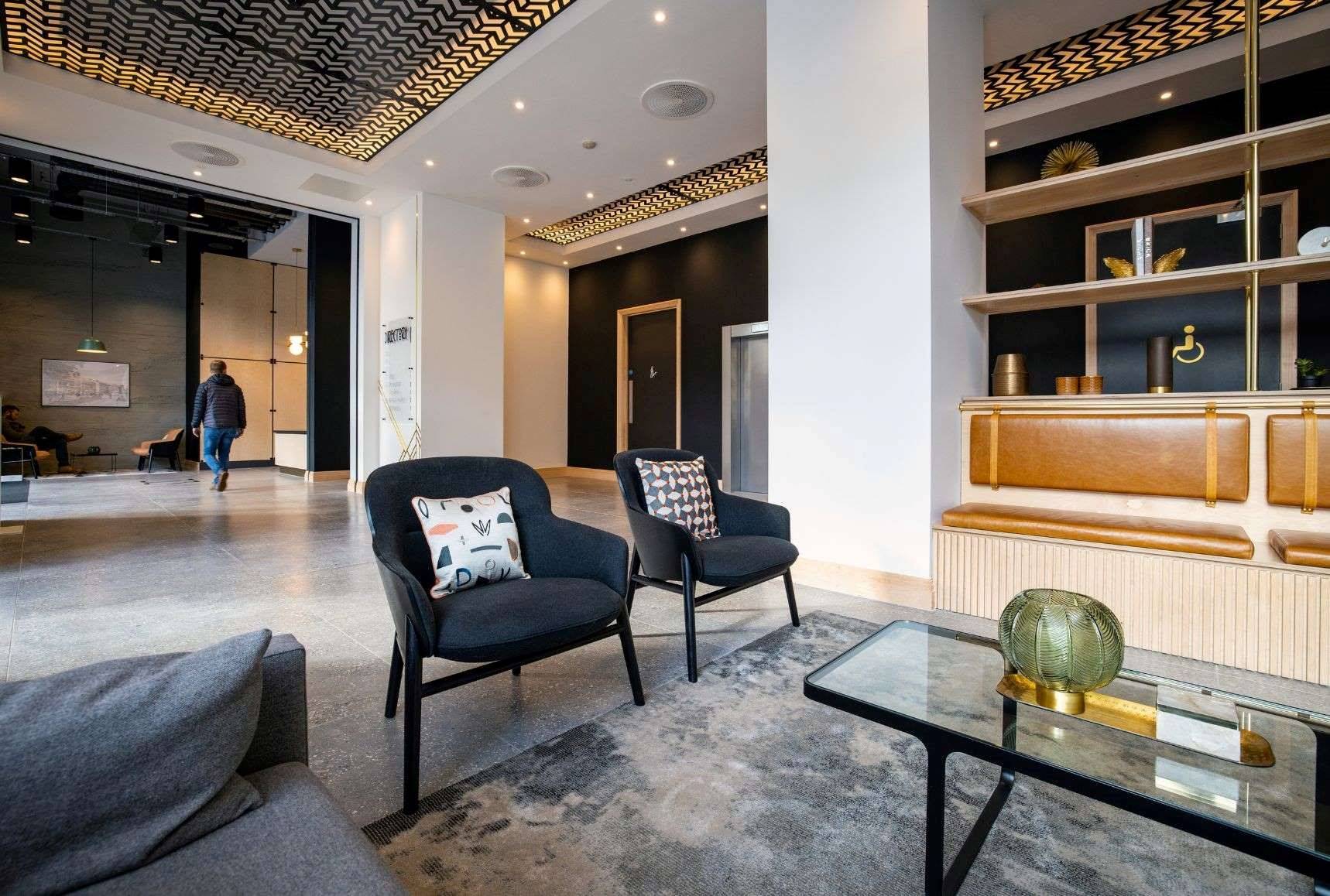A complete guide to commercial property value in 2025
Commercial property is an exciting venture, creating profitable bases from which business can flourish in a market that has seen seismic change over the past few years.
With the right strategy, a dash of vision and a bit of boldness, commercial property can offer long-term profitability and strong tenant appeal. Whether you’re building a portfolio or revitalising a single site, this guide explores the ins and outs of commercial property valuation and how to maximise the return on your asset.
Commercial property value trends in 2025
The commercial market has struggled to gain momentum heading into 2025, with Q4 2024 data from the RICS UK Commercial Property Monitor pointing to stagnating tenant demand and a more cautious investment climate. While average sale prices have shown marginal growth, office values only showed minor increase, and conditions remain uneven across sectors. For example, prime industrial space continues to outperform, while secondary office and retail properties face ongoing pressure.
Sustainability continues to climb the priority list for tenants and investors alike. Since 1 April 2025, all commercial lettings should meet a minimum EPC rating of C. Landlords failing to comply risk penalties of up to 20% of a building’s value. Beyond regulation, green credentials are a hiring advantage, a sustainable building not only protects the environment but actively strengthens the value proposition for both tenants and landlords.
For many businesses, the switch to hybrid working is becoming permanent. It is therefore likely that the most valuable office spaces will be those that are already designed to accommodate the activities of hybrid organisations with features like collaborative working spaces, social spaces, touch-down zones and facilities that allow in-person and remote employees to work effortlessly in tandem.
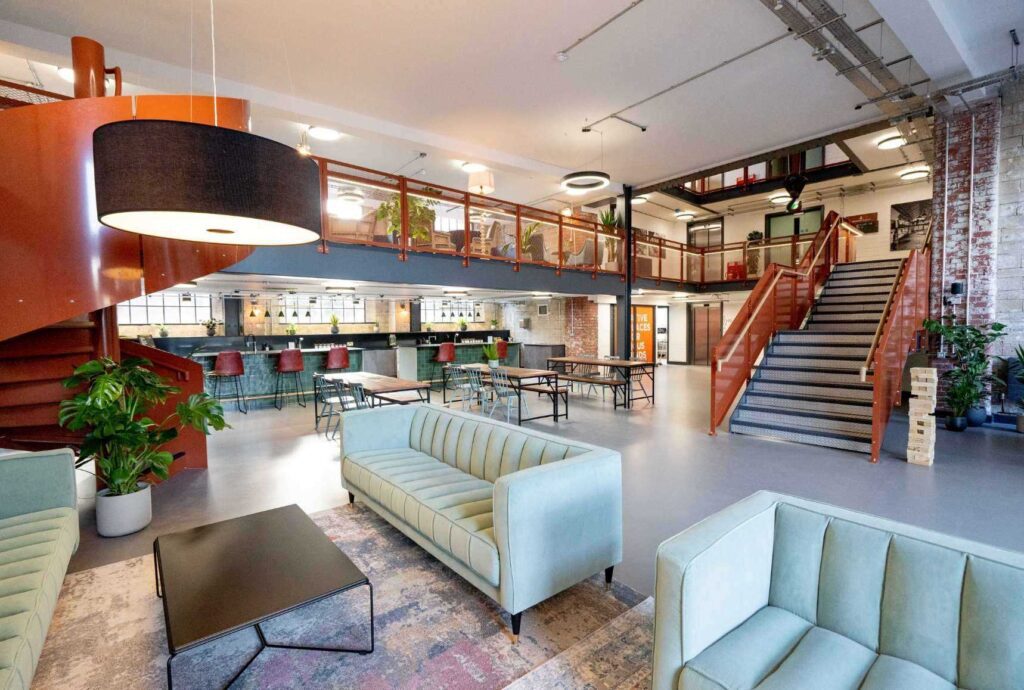
Image source: TCN uk
Factors affecting commercial property value
In a market defined by evolution, here’s what’s currently influencing commercial property value:
The economy
While inflation has started to ease, interest rates remain high and many investors are approaching cautiously. Growth in Q1 2025 was just 4%, a modest rebound from stagnation. Keeping an eye on macroeconomic signals is still vital for long-term investment planning. Exchange rates, energy prices, and government policy can all influence yields and shape investor confidence.
Location
As the saying goes: location, location, location. Of course, city-centre properties are often considered prime locations. However, access to good commuting infrastructure, local communities and businesses, and supplier networks are all factors which may be important to prospective tenants. Regional markets are thriving, Bristol, for example, has seen average Grade A rents rise to £50 per sq ft. Walkability, bike access, and local culture are becoming important location factors as tenants seek more than just proximity, they want place-making and lifestyle value.
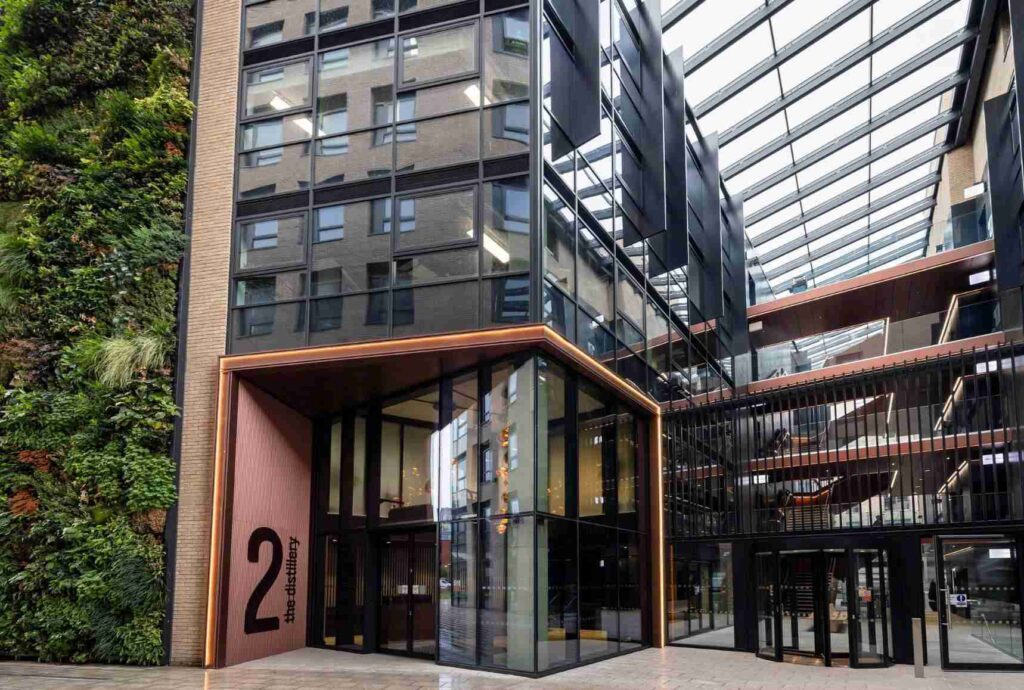
Renovation potential and repairs
There’s still plenty of value to be found in upgrading existing buildings. Repurposing older stock into vibrant, efficient spaces remains a powerful strategy. At Interaction, our CAT A+, CAT B transformation of Assembly B in Bristol created a striking, future-ready workspace that attracted high-profile tenants with its blend of smart design and sustainability. Renovations that incorporate biophilic design, smart building systems and flexible infrastructure tend to see the strongest return on investment.
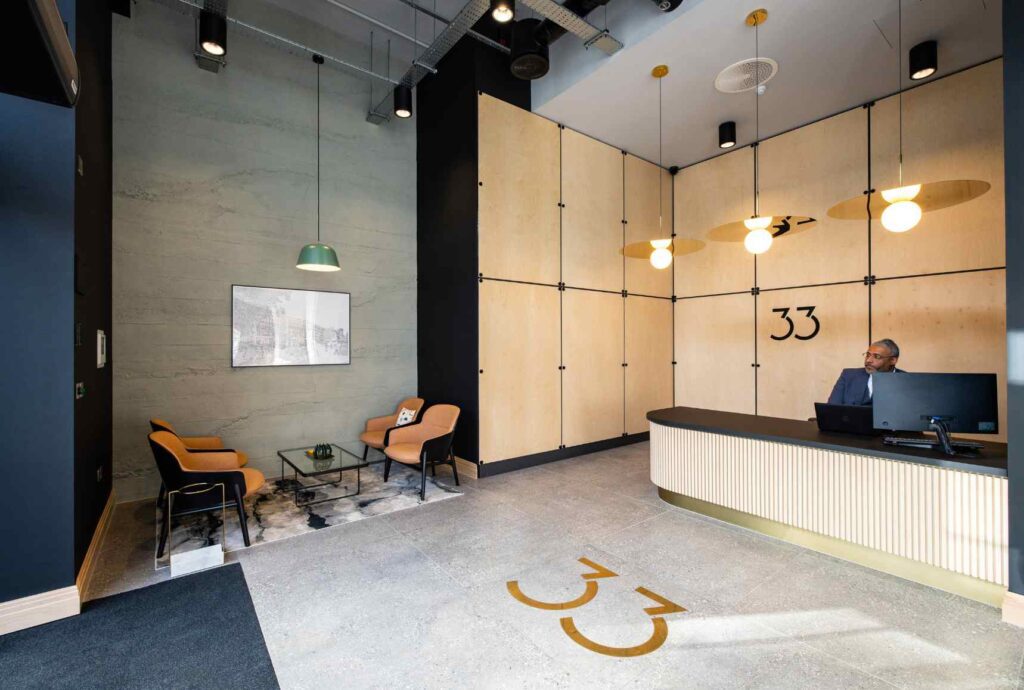
How to calculate the value of a commercial property
Valuing a commercial property may seem complex, and people will often go into it asking what the ‘best’ approach is. The key to a successful valuation is to get into the mindset of owners and tenants while also understanding the different factors at play in the market. Here are the main ways to value a commercial property:
Cost approach
This first involves estimating the ‘free market value’ of the land, which is its value if it were vacant and is calculated by comparing it to similar properties. This is then added to the projected costs of renovations and repairs, not to mention utilities and improvements required by tenants. Finally, if there has been any depreciation to the building then the associated costs will be subtracted from the total value. While this approach benefits from a consideration of tangible costs, it doesn’t account for the potential income a commercial property can generate.
Income approach
Ideal for rented properties, this method uses net operating income and divides it by the capitalisation rate (cap rate). Cap rate is calculated by dividing a property’s net operating income by its current value and considers factors such as the value of similar properties in the surrounding area. It’s popular because it reflects actual income potential and market trends. This is a common way to handle commercial building valuation and is especially effective when comparing investment returns across different asset types.
Sales comparison approach
The sales comparison approach means basing valuations on the market prices of equivalent properties. It isn’t the most precise method, but it allows you to tap into market activity and secure a deal that’s comparable to buildings with similar features and selling points. As this approach isn’t an exact science, prospective buyers should enlist the help of an appraiser so any unique selling points aren’t missed.
Value per square foot
Used widely in office leasing, this approach calculates property value based on internal floor area. A strong layout, high finish and flexible use spaces can significantly boost your square foot value. This method ensures that commercial buildings are valued based on the amount of space they can offer tenants. Value per square foot is commonly used for office buildings as tenants often require a more granular pricing structure. The reason for this is that when leasing office space, businesses will determine how much they need for each employee. This method also allows landlords to benchmark against regional averages and market expectations, helping with both pricing and pitch.
Rateable value
Assigned by the Valuation Office Agency, this helps determine business rates. It’s based on estimated open-market rental value and updated periodically. A change in tenancy or layout could impact this figure. When done properly, the valuation of commercial property provides critical insight into both immediate returns and future potential.
Attracting Tenants: What Commercial Landlords Need to Know [PDF download]
Meet the rising expectations of best-in-class tenants with this guide. Download now.
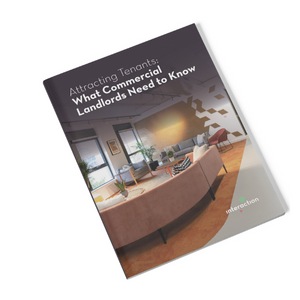
Should I enlist a professional to value my commercial property?
Absolutely. A professional surveyor offers an unbiased, accurate assessment, considering everything from compliance and repairs to income potential. This is especially important for insurance, lending and rent setting. When it comes to how to value a commercial property, expert input is worth every penny.
With commercial property valuations becoming more complex, a custom report can help you value a commercial building in line with 2025 standards and tenant expectations. Professionals will also consider evolving regulations, market shifts, and emerging tech infrastructure, which are often overlooked in DIY assessments.
How to increase the value of your commercial property
The most successful commercial landlords are always looking for ways to offer a fantastic experience to their tenants, be it through adding new functional spaces or improving facilities. This will not only increase tenant retention but also improve long-term value. Here’s how to increase value of commercial property without over-capitalising:
Design with your ideal tenant in mind
When you’re turning a blank canvas into a fully-functioning space for tenants, keep a vision of who these tenants may be at the forefront of your mind. Are you targeting scaling tech companies, established financial services providers or media agencies? Think carefully about their needs. For example, if your vision is a flexible office space where different businesses can connect and collaborate, then make sure you include a combination of open-place spaces and private, enclosed facilities (not to mention investing in designing for hybrid work. The best results come from tailored environments that reflect the culture and rhythm of your target tenants.) Working with an office fit-out company like Interaction will result in a bespoke space that fully conveys your vision down to the finest detail.
In our Guide to Futureproofing your Real Estate Strategy we outline the five key attributes that attracted high value tenants:
- Aesthetics
- Amenities
- Quality /Flexibility
- Sustainability
- Technology
Find out more here.
Expand lettable floor space
The term ‘lettable floor space’ refers to the areas of your property that can generate revenue. Working with a knowledgeable contractor can help you pinpoint areas of your building that can be turned into high-quality, functional spaces. This could involve, for instance, merging smaller rooms that aren’t attracting tenants or investing in an extension. It is particularly important to recognise the difference between cramming as many tenants into your building and making the most of opportunities to offer tenants a great experience. For instance, investing in great-quality non-lettable space, such as communal areas and foyers may seem counterintuitive when it comes to ROI, however it will make a real difference to how compelling the tenant experience is, which in turn pays dividends over time.
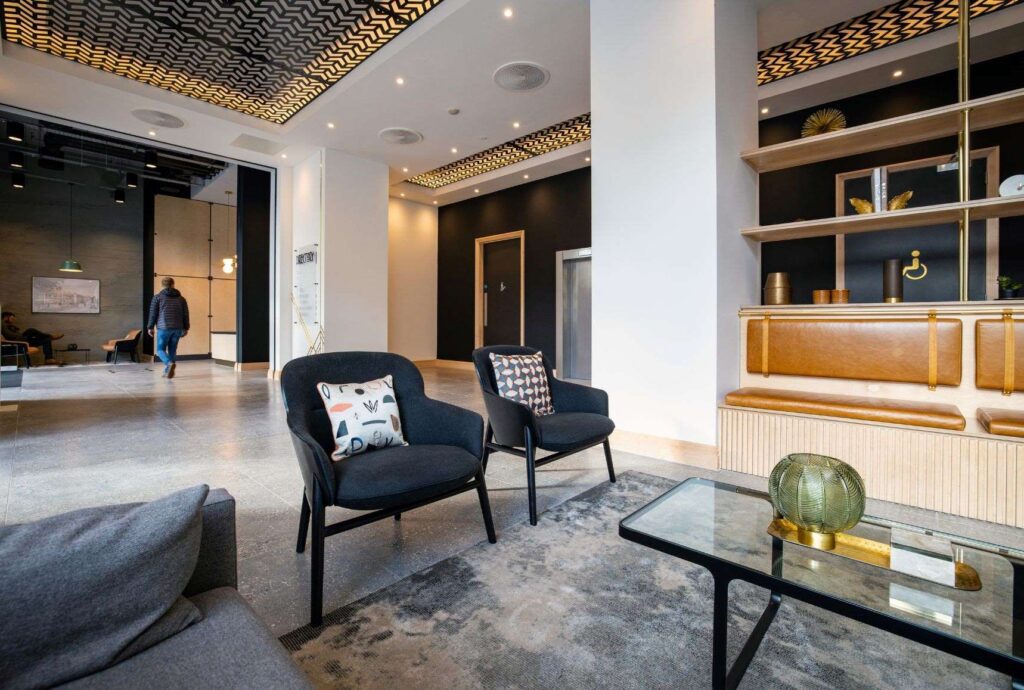
Keep rents competitive – and relationships vibrant
This is particularly relevant to high-value areas such as inner-city locations with heavy footfall and nearby amenities. While your property may be in a fantastic spot, have tonnes of space and be fully stocked in terms of facilities, you must remain open to the fact that if you’re up against a competitor with a similar offering it’s all going to come down to who offers the best deal. Be proactive and scope out rents for similar properties, so you can make sure you’re competitive. And be aware of the changing dynamics of landlord/tenant relationships. Gone are the days when interactions only happened at lease expiry. Tenants now expect to be treated like clients, as such the best landlord/tenant relationships are ones that are communicative, mutually beneficial and flexible.
Beyond pricing and service, placemaking is becoming a powerful tool for long-term value. Spaces that contribute to the character of a neighbourhood, through design, retail mix, or community integration, stand out in a crowded market. Our work at CARGO Work, part of Bristol’s vibrant Wapping Wharf development, exemplifies how embedding a building within a growing local ecosystem can attract tenants who want identity, culture and connection.
By keeping a rock-solid roster of happy and committed tenants, you can maintain the kind of projected income that is ideal for landlords using an income-based approach to property valuation.
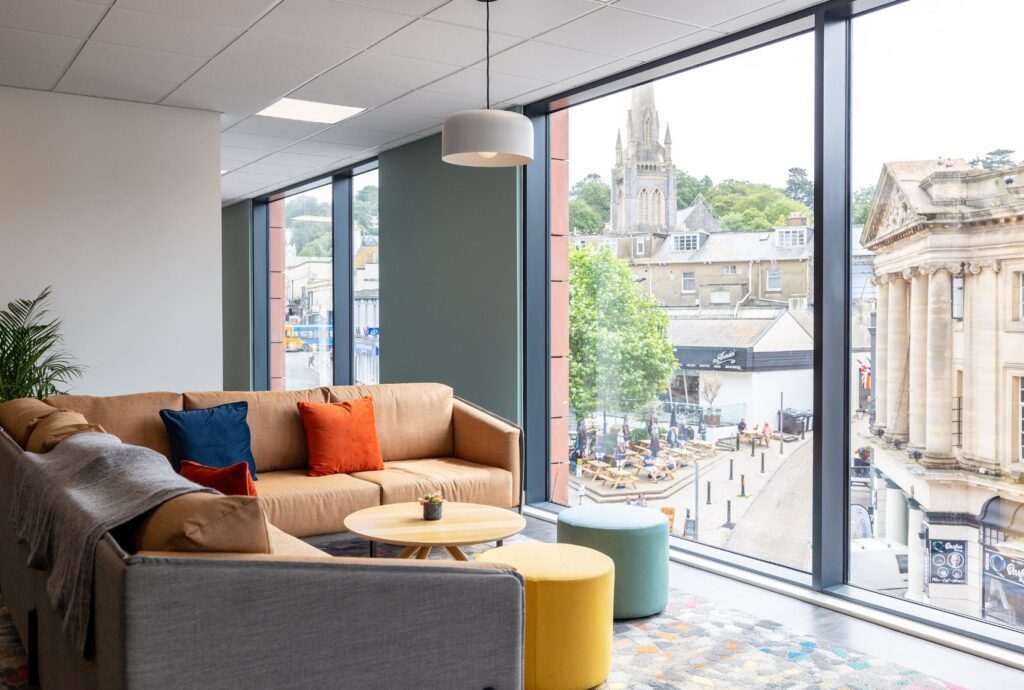
Gain sustainability credentials
More tenants are actively seeking buildings with green lease clauses, with many occupiers now requesting sustainability credentials before signing. Net-zero office design is also gaining momentum, offering long-term savings while aligning with occupiers’ ESG goals. Earning certifications like BREEAM (especially “Excellent” or “Outstanding”) can boost rent and sale value. We explore this in more detail in our sustainable design strategy guide. Plus, many sustainability upgrades, such as LED lighting or smart HVAC, have the added benefit of lowering running costs.
Choose a BREEAM certificate based on the life-cycle of your building (e.g. BREEAM New Construction or BREEAM Refurbishment and Fit-Out) before entering the assessment stage. For some time it was thought that sustainable office fit-outs were too costly. However, it’s becoming increasingly apparent that sustainability is not only admirable but profitable. CIM found that buildings in the UK that attained a BREEAM rating led to a 8-12% increase in value than a standard building.
Chat with Charlie
Get in touch with Charlie, our Relationships Manager to discuss how we could revolutionise your space.
Email: [email protected]
All general enquiries
Phone: 01225 485 600
Email: [email protected]
Or sign up for our newsletter here

How Interaction can increase commercial property values
At Interaction, we work with commercial landlords and asset managers to unlock hidden value and attract top-tier tenants. Whether it’s by improving existing facilities or creating new lettable space, Interaction can help you deliver the best possible experience for your tenants while also maximising profit. Here’s how our expert services can help:
- CAT A: A quality blank canvas with compliant infrastructure (e.g. water, power, bathroom facilities), ready for tenant personalisation. Ideal for repositioning buildings in competitive markets. CAT A costs in 2025 typically range from £50–£100 per sq ft. We focus on delivering robust, futureproofed systems while keeping aesthetics crisp and contemporary.
- CAT A+: Also known as ‘plug and play’, this approach offers move-in ready spaces with key furnishings. Interaction’s landlord-focused plug and play service is called Primed. Our Primed specialists are experts in delivering fast turnaround, high-quality spaces that attract best-in-class tenants. Prices vary depending on scope but sit between CAT A and CAT B. These spaces are especially popular with startups and scaleups looking for quality without complexity.
- CAT B: Tailored, ready-to-work environments including bespoke fit-outs, tech integration and lifestyle-driven amenities. CAT B projects typically range from £60–£120 per sq ft. Whether it’s quiet zones, breakout spaces or client-facing suites, we create environments that work as hard as their occupants.
Flex Space and Coworking
Our newest offering helps landlords reposition underutilised areas into flexible, revenue-generating spaces. From short-term desks to private offices and managed services, our Flex Space and Coworking solutions respond to shifting demand and help futureproof your property. This approach gives landlords agility in unpredictable markets and opens the door to entirely new income streams.
Interaction delivers smart, sustainable workspaces that increase asset value, attract high-calibre tenants and reduce operational costs. Our expert fit-outs combine speed, strategy and precision to help you unlock the full potential of your property. Get in touch to see how we can support your next project.
Join the Interaction community
Sign up for our newsletter to stay up-to-date with the latest insights
on the modern workplace and commercial property trends.
